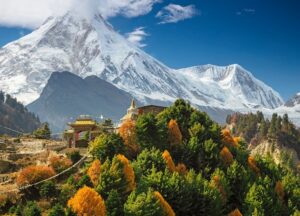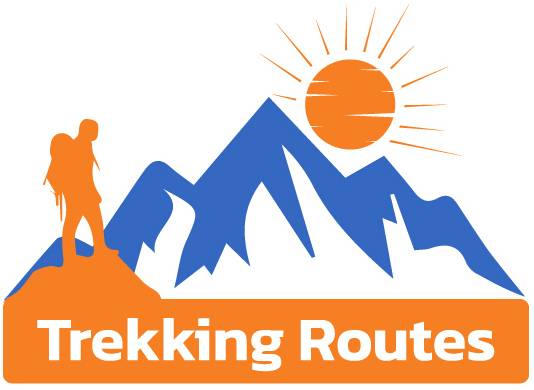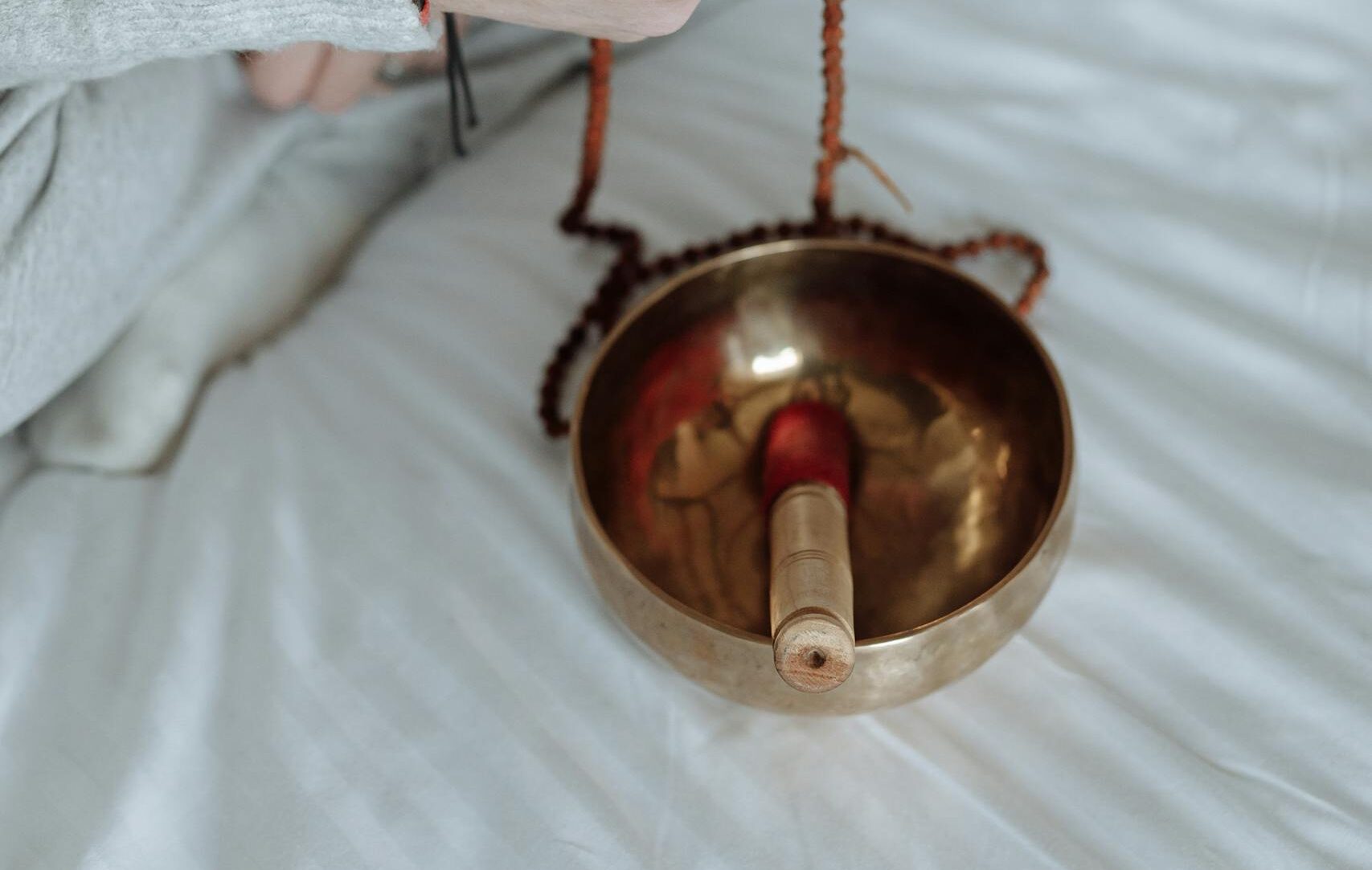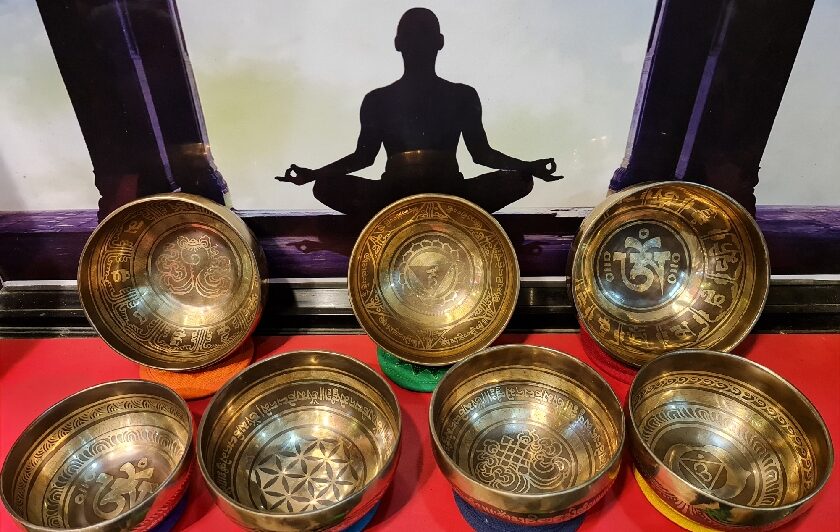
The Manaslu Circuit Trek is a captivating journey through one of Nepal’s most pristine and less-traveled regions. This trek offers a blend of cultural immersion, breathtaking landscapes, and the challenge of traversing high mountain passes. While the trek is immensely rewarding, it’s essential to understand the various factors contributing to its difficulty. In this comprehensive guide, we’ll explore all aspects of the Manaslu Circuit Trek difficulty to help you prepare effectively and make the most of your adventure.
Manaslu Circuit Trek Difficulty Factors
The Manaslu Circuit Trek, like any high-altitude trek, presents several challenges that trekkers need to consider. These include the trek distance, altitude sickness, weather conditions, physical and mental endurance, and the availability of food and accommodation. Understanding these factors in detail will help you prepare adequately and increase your chances of a successful trek.
Trek Distance
The Manaslu Circuit Trek spans approximately 177 kilometers (110 miles) and usually takes about 14 to 18 days to complete, depending on the itinerary and acclimatization needs. Each day involves trekking for 5 to 8 hours over diverse terrains, including steep ascents, descents, rocky paths, and river crossings. The varied landscape keeps the trek interesting but also contributes to its difficulty.
The distance itself might seem manageable to seasoned hikers, but the challenge lies in the elevation gains and the rugged nature of the trail. Some sections of the trek are particularly steep and require a good level of fitness and stamina. The daily trekking hours also mean that you need to have both physical and mental endurance to keep going day after day, especially as you gain altitude and the oxygen levels drop. Therefore, it is highly recommended to prepare physically for at least a few months before attempting the trek. Regular cardio exercises, strength training, and practice hikes with a loaded backpack can significantly enhance your readiness for the Manaslu Circuit.
Altitude Sickness
Altitude sickness, or Acute Mountain Sickness (AMS), is a significant concern for trekkers on the Manaslu Circuit. The trek reaches a high point of 5,106 meters (16,752 feet) at the Larkya La Pass. Symptoms of AMS include headaches, nausea, dizziness, and fatigue. Proper acclimatization is crucial to mitigate the risk of AMS.
Climbing to such high altitudes without giving your body enough time to adjust can lead to severe health issues. The body needs to adapt to the lower oxygen levels, which takes time. Therefore, incorporating acclimatization days into your trekking itinerary is essential. These rest days allow your body to adjust and significantly reduce the risk of AMS. It is also important to recognize the symptoms of AMS early. If you experience any symptoms, it is crucial to inform your guide and take appropriate measures, such as resting and hydrating. In severe cases, descending to a lower altitude might be necessary to prevent life-threatening conditions such as High Altitude Pulmonary Edema (HAPE) or High Altitude Cerebral Edema (HACE).
Weather and Climate
The weather and climate along the Manaslu Circuit can be unpredictable and harsh, especially at higher altitudes. Understanding the seasonal variations is crucial for planning your trek.
In the lower regions, the weather is generally warmer and more stable, but as you ascend, the conditions can change rapidly. You might start your day under clear blue skies and end it in a snowstorm. The temperatures also vary widely. During the day, the sun can be quite strong, but as soon as it sets, the temperatures can drop dramatically. This variation requires trekkers to be prepared with layered clothing that can be adjusted according to the weather. A good quality sleeping bag is also essential for the cold nights at higher altitudes.
Manaslu Circuit Trek Difficulty in Autumn
Autumn (September to November) is the most popular season for trekking the Manaslu Circuit. The weather is generally stable, with clear skies and moderate temperatures, making it an ideal time for trekking. However, the popularity of this season means trails can be busier, and accommodation may need to be booked in advance.
The clear weather in autumn provides excellent visibility, allowing trekkers to fully appreciate the stunning views of the Himalayan peaks. The moderate temperatures make trekking more comfortable compared to the extreme cold of winter or the heavy rains of the monsoon season. However, the increased number of trekkers means that the trails can become crowded, especially in the popular teahouses. This can sometimes lead to delays and a more hurried experience. Despite these minor inconveniences, the stable weather and beautiful scenery make autumn an excellent choice for the Manaslu Circuit Trek.
Manaslu Circuit Trek Difficulty in Spring
Spring (March to May) is another excellent season for the Manaslu Circuit Trek. The weather is warmer, and the trails are adorned with blooming rhododendrons. However, pre-monsoon showers can occasionally make the trails slippery and challenging.
The warmer weather in spring is a welcome change after the cold winter months. The blooming flowers add a splash of color to the landscape, making the trek even more beautiful. However, the increasing temperatures also mean that snow at higher altitudes starts to melt, making some sections of the trail wet and slippery. Pre-monsoon showers are another challenge, as they can make the trails muddy and difficult to navigate. It is important to have good quality trekking boots with a strong grip to handle these conditions. Despite these challenges, the beauty of the rhododendrons and the pleasant weather make spring a favored time for many trekkers.
Manaslu Circuit Trek Difficulty Off-Seasons
Trekking during the off-seasons, namely the monsoon (June to August) and winter (December to February), is considerably more challenging. The monsoon brings heavy rains, leeches, and muddy trails, while winter can bring extreme cold, heavy snowfall, and potential trail closures.
During the monsoon season, the trails become very slippery and the risk of landslides increases. The heavy rain can also lead to swollen rivers and streams, making crossings dangerous. The presence of leeches is another nuisance that trekkers have to deal with. The winter season, on the other hand, brings its own set of challenges. The temperatures drop significantly, especially at higher altitudes, and heavy snowfall can block the trails. The risk of avalanches also increases during this time. While the off-seasons offer a more solitary trekking experience with fewer crowds, the harsh weather conditions make it a less favorable time for most trekkers.
Food and Accommodation
The availability and quality of food and accommodation along the Manaslu Circuit Trek can significantly impact the trek’s difficulty. While teahouses provide basic meals and lodging, the facilities become more rudimentary as you ascend. It’s essential to plan for dietary needs and understand the limitations of teahouse accommodations.
In the lower regions, teahouses offer a variety of meals, including traditional Nepali dishes like dal bhat (lentil soup with rice) as well as Western foods like pasta and pancakes. However, as you ascend, the menu becomes more limited due to the difficulty of transporting supplies to higher altitudes. It is advisable to carry some high-energy snacks to supplement your diet. Accommodation also varies widely. In the lower regions, teahouses might offer private rooms with basic amenities, but at higher altitudes, you might have to share a dormitory-style room with other trekkers. The teahouses are usually unheated, so a good quality sleeping bag is essential. Understanding these limitations and planning accordingly can make your trekking experience more comfortable.
Physical and Mental Challenges
The physical demands of the Manaslu Circuit Trek require a good level of fitness. Daily trekking involves significant elevation gains and losses, which can be taxing on the body. Additionally, the mental challenge of enduring long trekking days, dealing with altitude, and facing potentially harsh weather requires mental resilience.
Training for the trek should start several months in advance. Cardiovascular exercises such as running, cycling, and swimming can help build stamina. Strength training, especially focusing on the legs and core, can help you handle the steep ascents and descents. Practice hikes with a loaded backpack are also crucial to simulate the conditions of the trek. Mental preparation is equally important. The long days of trekking can be exhausting, and there will be times when you might feel like giving up. Developing a positive mindset and learning to push through the tough moments is essential. Techniques such as visualization, setting small goals, and staying motivated by focusing on the end goal can help you stay mentally strong.
Minimizing the Manaslu Circuit Trek Difficulty
Despite the challenges, there are several strategies to minimize the difficulty of the Manaslu Circuit Trek. Proper acclimatization, choosing the right season, hiring a professional team, and having a customizable itinerary can significantly enhance your trekking experience.
Proper Acclimatization and Staying Hydrated
Proper acclimatization involves ascending slowly and taking regular rest days to allow your body to adjust to the altitude. Staying hydrated is also crucial as dehydration can exacerbate the symptoms of AMS.
Including rest days in your itinerary is essential to allow your body to acclimatize. These rest days are not for complete rest but involve short hikes to higher altitudes followed by a return to a lower altitude to sleep. This “climb high, sleep low” strategy is effective in helping your body adjust. Hydration is equally important. At high altitudes, the body loses water faster, and it is essential to drink plenty of fluids. Avoiding alcohol and caffeine, which can cause dehydration, is also advisable. Electrolyte solutions and hydration tablets can be beneficial in maintaining your fluid balance.
Choosing the Right Seasons
Opting to trek during the favorable seasons of autumn and spring can reduce the difficulty significantly. These seasons offer more stable weather conditions, making the trek safer and more enjoyable.
Autumn and spring are the best time to trek the Manaslu Circuit Trek. The stable weather conditions during these seasons mean fewer disruptions and a safer trekking experience. The moderate temperatures make the trekking more comfortable, and the clear skies offer stunning views of the mountains. The beautiful landscapes with blooming rhododendrons in spring and the colorful foliage in autumn add to the visual delight of the trek. Planning your trek during these seasons can significantly reduce the difficulties associated with harsh weather conditions.
Hire Professional Team
Hiring a professional trekking team, including guides and porters, can alleviate many logistical challenges. Experienced guides can provide valuable insights, ensure your safety, and help with acclimatization strategies, while porters can carry heavy loads, allowing you to focus on the trek.
A professional guide can make a significant difference in your trekking experience. They are familiar with the route, the challenges, and the local culture. They can provide valuable information about the trail, help with navigation, and ensure your safety. Guides are also trained to handle medical emergencies and can provide first aid if necessary. Porters can carry your heavy loads, reducing the physical strain on your body and allowing you to enjoy the trek more. Hiring a professional team also supports the local economy, providing employment to the local people.
Get a Customizable Itinerary
A customizable itinerary allows you to tailor the trek according to your fitness level, acclimatization needs, and personal preferences. This flexibility can make the trek more manageable and enjoyable.
Every trekker is different, and having a customizable itinerary can cater to individual needs and preferences. Some trekkers might prefer a slower pace with more rest days, while others might want to complete the trek in a shorter time. A customizable itinerary allows you to adjust the pace of the trek according to your fitness level and acclimatization needs. It also provides the flexibility to explore additional side trails and experience the local culture more deeply. This flexibility can enhance your overall trekking experience and make the Manaslu Circuit Trek more enjoyable and manageable.
Conclusion
The Manaslu Circuit Trek is a challenging yet rewarding adventure that offers trekkers the chance to explore one of Nepal’s most beautiful and less-traveled regions. By understanding the various difficulty factors and preparing accordingly, you can significantly enhance your trekking experience. Proper acclimatization, choosing the right season, hiring a professional team, and opting for a customizable itinerary are key strategies to minimize the difficulty and ensure a successful trek. Embrace the challenges and enjoy the breathtaking landscapes and rich cultural experiences that the Manaslu Circuit has to offer.
The sense of accomplishment upon completing the trek, coupled with the stunning views of the Himalayan peaks and the warm hospitality of the local people, makes the effort worthwhile. The Manaslu Circuit Trek is not just a test of physical endurance but also a journey of self-discovery and personal growth. With the right preparation and mindset, you can overcome the challenges and create memories that will last a lifetime. So, gear up, prepare well, and embark on this incredible adventure in the heart of the Himalayas.







0 Comments